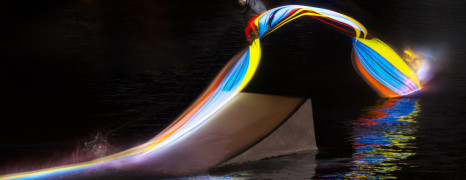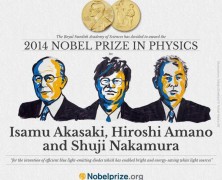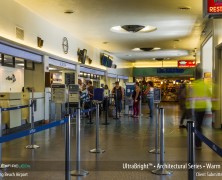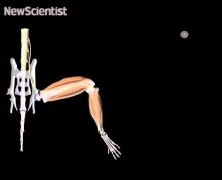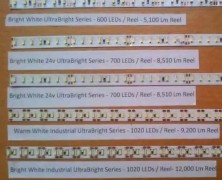Red Bull is well known for creating iconic, captivating events that promote an active, exciting lifestyle. A terrific example involved “painting with light” – using Flexfire LEDs to illuminate the actions of professional wakeboarders. Photographer Patrick Rochon shot three Red Bull wake riders at Orlando, Florida’s OWC Cable Park as part of a photography event called Snap! Orlando. In preparation for the shoot, producer Evan Jones outfitted the wakeboards with waterproof strip lights from Flexfire LEDs. The lights were part of an intricate marriage of technology and skill, with athletes and production crew eager to create something special for Red Bull’s Illume Image Quest. The Red Bull wakeboard video was a tremendous success, resulting in one of the most viral videos in company history. This behind-the-scenes video offers a great look at some of the challenges the team faced, and even shows them installing our strip lights onto the boards in preparation. And of course, there are some fantastic images of the “painted” wakeboarders in...
Invention of Blue LED Wins Nobel Prize...
posted by Flexfire LEDs
The Nobel Prize rewards an invention “of greatest benefit to mankind“, and this year, that distinction recognized LED lighting as an energy-efficient technology that will fundamentally change the way we see our planet. The Royal Swedish Academy of Sciences announced that three scientists were awarded the 2014 Nobel Prize in Physics for inventing the blue LED. Isamu Akasaki, Hiroshi Amano, and Shuji Nakamura were the first to generate blue LED light, a feat that had eluded scientists for decades. Green and red LED lights had long since already existed, but blue light was necessary to combine with green and red to generate white light, as seen below. Once blue LEDs were created, it allowed the commercial development of white LED lamps, which are now revolutionizing the lighting and energy sectors worldwide. It’s why we’re currently seeing a rapid transition to LEDs in everything from home and hotel illumination to massive infrastructural city lighting in places like London, Tokyo and New York. Interestingly, blue LEDs are also showing promise in the treatment of Alzheimer’s disease, and were even used to reverse paralysis in laboratory mice. Among many other benefits, LED lamps are often recognized as being extremely energy-efficient. This is mainly reflected in a lamp’s “lumens per watt” data, which indicates the amount of light generated (“lumens”) per watt of energy used. High quality LEDs are capable of generating upwards of 300 lumens per watt, vastly outperforming incandescent and fluorescent lighting sources (16 lumens/watt and 70 lumens/watt, respectively). Further, LEDs last 10 to 100 times longer than competing technologies, which allows for a dramatic reduction in waste and material consumption. LED light is seen as a bright beacon for those in the developing world, where access to electricity often comes at a premium. “The LED...
Flexfire LEDs UltraBright Strip Lights at California’s Long Beach Airport...
posted by Flexfire LEDs
LED strip lights are renowned for their ability to produce attractive indirect light in a small package, which made them perfect for this installation at a historic and architectural landmark. Civil engineer Stephan Lum was placed in charge of the project, choosing to install Flexfire LEDs UltraBright Strip Lights at California’s Long Beach Airport. As part of a larger renovation effort, the plan was to update the airport’s historic Art Deco terminal, which was originally built in 1941. Designers were keen to upgrade the terminal’s lighting without disturbing its original design, which made it necessary to avoid the use of contemporary light fixtures. Our high quality LED strip lights were a perfect solution; the strips themselves are hidden from view, and provide ample indirect light while also being highly durable and energy efficient. Our strip lights were installed above the check-in counters, into cove channels and in the airport news and gift shop to create a generous, inviting atmosphere for travelers on their way to their next flight. Designers were thrilled with the results, opting to install additional Flexfire LEDs strip lights around trees in the airport’s outdoor palm garden. Jeff Mills of Elec-Tech Electrical Contractors was placed in charge of this outdoor installation, attaching our Bright White UltraBright™ Outdoor Design Series Strip Lights to a dimmer for complete control of brightness level and energy usage. These outdoor LED strip lights feature IP weatherproof coating that protects them from water, dust, and other environmental hazards. The tree display was originally intended for the Christmas season only, but officials decided to leave it up indefinitely after positive public response. Check out more project photos below, or see the installation for yourself next time you’re passing through the Long Beach Airport! ...
LED Light Beats Paralysis...
posted by Flexfire LEDs
Straight from the pages of science fiction, a team at King’s College in London has reversed paralysis using stem cell neurons treated with blue LED light. The trials took place in April of this year, during which scientists were able to restore muscular function in the formerly paralyzed legs of mice. The Wall Street Daily recently followed up with a report confirming the vital role that LED light played in this experiment. Additional testing is now being done to create a usable model for human trials, and time will tell if indeed LED light beats paralysis for good. The team used stem cells that contained neurons with a unique twist – a light sensitive gene that has the same biological structure as marine algae. These specially engineered cells were implanted into the exposed nerves of a paralyzed mouse, and then things really got interesting. The cells were exposed to blue LED light, and this triggered a connection between the nerve and the muscle, which essentially reverses paralysis. Scientists were able to adjust the intensity of the muscle’s contraction simply by varying the duration, intensity, and frequency of the LED light flashes. This procedure shows promise for restoring muscular function in individuals who suffer from spinal cord injuries and motor neuron diseases. Further, it is a dramatic improvement over existing paralysis treatments that use electrical stimulation, which are often painful and cause rapid muscle fatigue. In practice, this will basically be a tiny optical pacemaker that has a blue LED light built into it. The implanted pacemaker will consistently flash light onto the special neurons, thus allowing normal muscular function. The team at King’s College plans to develop this pacemaker within the next five years....
Understanding The Different Numbers Used In LED Strip Lights...
posted by Flexfire LEDs
When shopping for LED strip lights, you’ll regularly come across numbered terms such as 3020, 3528, and 5050. So what do these numbers mean, and why are they important in your buying process? This simple explanation will help you in understanding the different numbers used in LED strip lights. First, a basic understanding of how the strips themselves are constructed. The LED chips are mounted onto a thin, flexible metal strip that acts as a heat sink, drawing heat from the light chips and allowing them to remain cool during operation. This construction accounts for the “SMD” you’ll often see in strip light specifications, which stands for Surface Mount Device. The four-digit designation refers to the dimensions of the chip itself, in millimeters. A 3528 chip, for example, measures 3.5mm by 2.8mm, while a 5050 chip is 5.0mm by 5.0mm square. These different sizes dictate how many chips can be placed on a strip, which in turn determines its particular light qualities. Each has its benefits, so let’s break them down one at a time. The 5050 chips that Flexfire LEDs uses are actually composed of 3 light diodes, a construction sometimes referred to as a tri-chip. With 3 diodes, a 5050 chip will be brighter than other chips with one individual diode. But while a tri-chip is theoretically three times brighter, their larger size means fewer of them will fit onto a strip’s PCB (Printed Circuit Board). It also means they will generate more heat, requiring a thicker PCB to act as a heat sink. Finally, a tri-chip can be constructed with different types of diodes in the same chip, generating unique visual results. The three diodes can be combined to create millions of different color combinations, making them an excellent choice for...






